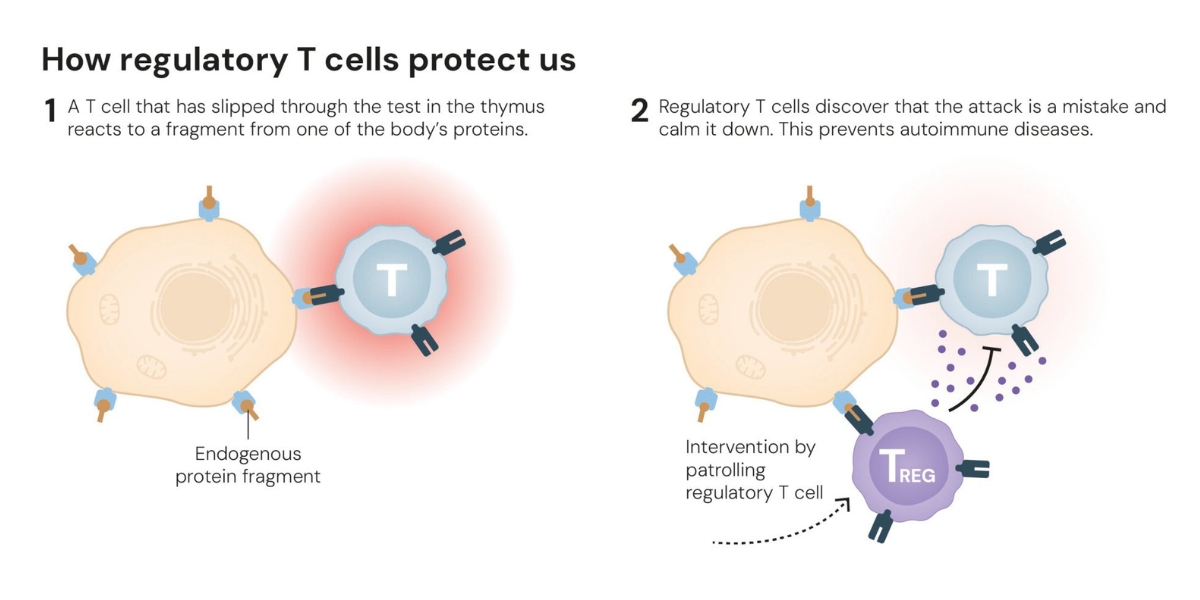On Monday, October 6, 2025 The Nobel Assembly at Karolinska Institutet awarded the Nobel Prize in Physiology or Medicine 2025 to Dr. Mary E. Brunkow, Dr. Fred Ramsdell, and Dr. Shimon Sakaguchi for their discoveries concerning peripheral immune tolerance.
Their work was key to understanding how the immune system is kept in check, with the laureates credited as having identified regulatory T cells (T regs). T regs are now understood to be crucial immune cells that ensure any given immune response doesn’t go too far and damage healthy tissues. This work was critical to addressing one of the most important questions in immunology — how does the immune system distinguish between threats (such as microbial invaders) and the body’s own cells?

In 1995, Dr. Sakaguchi discovered that a type of immune cell with regulatory function must be involved in protecting the body from autoimmune diseases. Six years later, Dr. Brunkow and Dr. Ramsdell discovered FOXP3 as the key gene involved in the development of these cells. When this gene was mutated, or not functional, it led to serious autoimmune disease.

Two years later in 2003, Dr. Sakaguchi and Dr. Ramsdell, along with Dr. Rudensky, demonstrated that the FOXP3 gene was responsible for the development of the immune cells now known as T regs.
Dr. Megan Levings is an investigator at BC Children’s Hospital Research Institute whose research team is building on these early discoveries to better understand the biology of T regs and integrate lab and clinical work in the development of new treatments for transplant rejection and autoimmunity. Her recent paper published in Science Translational Medicine on the potential of engineered regulatory T cells to “teach” the immune system to be tolerant of transplanted cells was cited in the Nobel Prize scientific summary.
On hearing the news of the award, Dr. Levings was delighted. “It is an astonishing achievement to have the work of these researchers on regulatory T cells be recognized by the Nobel Prize in Medicine as an outstanding effort to the benefit to humankind.”
“The award also highlights the potential to harness the properties of regulatory T cells to develop treatments for numerous diseases such as type 1 diabetes, multiple sclerosis, organ rejection, and more,” says Dr. Levings.
Dr. Levings is also a professor at the University of British Columbia in the Faculty of Medicine's Department of Surgery and the School of Biomedical Engineering, a joint school of the Faculties of Medicine and Applied Science.
Nobel Prize Press release
Images thanks to © The Nobel Committee for Physiology or Medicine. Illustrator Mattias Karlén




